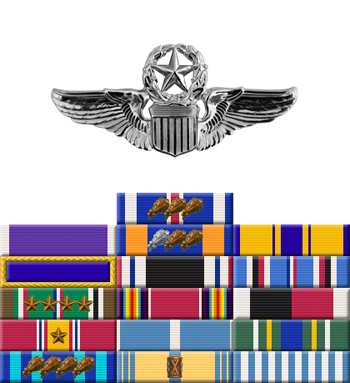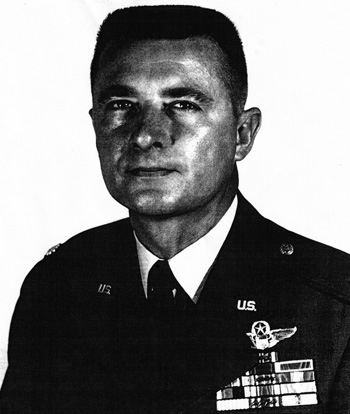
|
Walter E. Starck |
 |
|||
| Rank, Service | ||||
Colonel O-6, U.S. Air Force |
||||
| Veteran of: | ||||
|
||||
| Tribute: | ||||
Walter Starck was born on September 2, 1920, in Hoisington, Kansas. He entered the Aviation Cadet Program of the U.S. Army Air Forces on January 25, 1942, and was commissioned a 2d Lt and awarded his pilot wings at Moore Field, Texas, on November 10, 1942. After completing P-47 Thunderbolt training, he was briefly assigned to the 321st Fighter Squadron of the 326th Fighter Group at Westover Field, Massachusetts, and then joined the 487th Fighter Squadron of the 352nd Fighter Group in December 1942. Lt Starck deployed with the group to England in July 1943, and he was credited with destroying 7 enemy aircraft in aerial combat plus 1 probable and 2 damaged before bailing out and being taken as a Prisoner of War on November 27, 1944. Capt Starck was repatriated on May 13, 1945, and then served at Moore Field, Texas, and Luke Field, Arizona, before serving on occupation duty in Europe from May 1946 to May 1948. Col Starck served at Red Bank, New Jersey, from June 1948 to July 1950, followed by service with the 2750th Air Base Wing at Wright-Patterson AFB, Ohio, until November 1953. He then served with the 58th Air Base Group at Taegu AB, South Korea, from November 1953 to October 1954, followed by service with the 818th Air Base Group at Lincoln AFB, Nebraska, from November 1954 to March 1962. His next assignment was as Director of Civil Engineering with the 3rd Air Division at Andersen AFB, Guam, from March 1962 to August 1964, followed by service as Executive Officer in the Directorate of Civil Engineering with Headquarters Strategic Air Command at Offutt AFB, Nebraska, from August 1964 until his retirement from the Air Force on July 31, 1965. Walter Starck died on January 7, 2010. |
||||
|
||||

